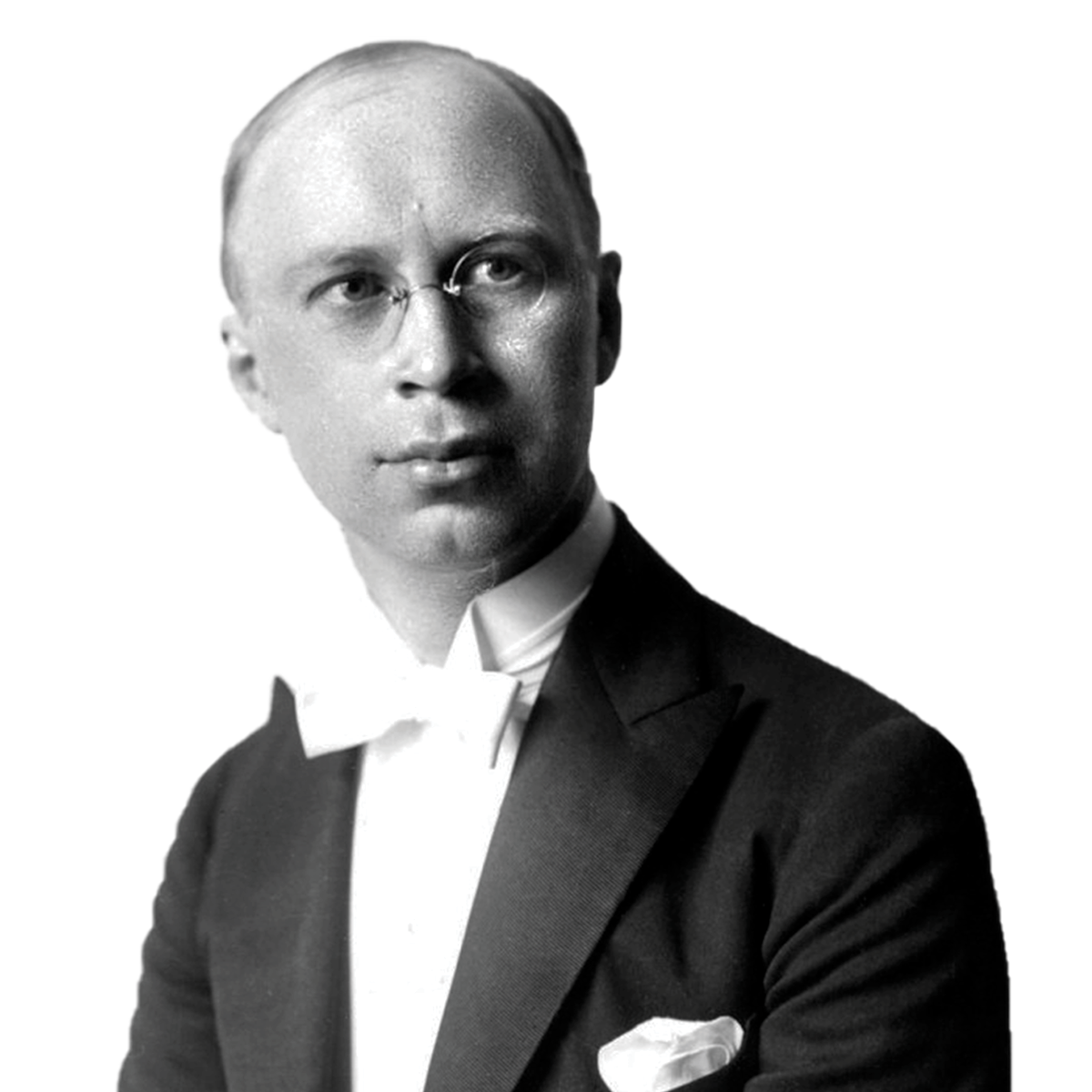
|
Symphony No. 5 in B-flat major, Opus 100 Andante |
Composed: 1944 Estimated length: 45 minutes |
|
Born on April 23, 1891, in Sontsovka, Ukraine (part of the Russian Empire at the time); Died on March 5, 1953, in Moscow, Russia |
|
|
First performance: January 13, 1945, in Moscow, with the composer conducting the USSR State Symphony Orchestra. |
|
|
First Nashville Symphony performance: April 3, 1967, with Willis Page conducting at War Memorial Auditorium. |
|
Sergei Prokofiev left Russia during the Bolshevik Revolution for almost two decades of voluntary exile in the West. Eventually homesickness got the better of him, and he decided in the mid-1930s to resettle in his homeland for good. Back in the USSR, Prokofiev faced the dangerous challenge of navigating his way through Soviet cultural policy, which dictated that a work of art must be accessible to the masses while affirming the utopian ideals of a society that preached radical egalitarianism.
With the fifth of his seven symphonies, Prokofiev attained the high point of his public success in the Soviet Union—even receiving the sort of acclaim usually reserved for a military hero. When he lifted his baton to conduct the world premiere in Moscow in January 1945, the distant sounds of artillery reverberated in the concert hall: salvos celebrating the Red Army’s latest victory against the Germans as they crossed the Vistula River.
In November 1945, shortly after Serge Koussevitzky led the Boston Symphony in the American premiere, Prokofiev even appeared on the cover of Time magazine. Its lengthy report on the state of Soviet music described the Fifth as “a great, brassy creation with some of the intricate efficiency and dynamic energy of a Soviet power plant and some of the pastoral lyricism of a Chekhov countryside.”
Prokofiev himself described his Fifth Symphony as a work intended “to sing the praises of the free and happy man.” He believed it represented “the culmination of an entire period in [his] work.” At the same time, the struggle of the war is clearly a significant influence on the work’s epic design. Despite the intense stress of the war—Prokofiev and other artists were evacuated to remote regions of the Soviet Union while Moscow was still in danger—the composer benefited from a prolific burst of creativity during these years.
The Fifth traces a course aimed at apparent “victory” at the conclusion that echoes Beethoven’s iconic Fifth Symphony as the model for the journey from darkness over light. Prokofiev designs a notable internal symmetry among the four movements: the first and third, similar in proportion, are relatively slow and contain the weightiest music, while aspects of the fast-paced second and fourth movements mirror each other.
WHAT TO LISTEN FOR
An unadorned, widely spanning melody shared by flute and bassoon opens the work. Unassuming as this material seems at first, the theme is fleshed out with changing instrumental colors and harmonic turns, revealing its suitability for epic treatment. The meter shifts for a meandering second theme, while subsidiary ideas are added to the mix before an exhilarating development section rich in Prokofiev’s trademark swerves of key. A darker note of violence enters in with the dissonantly climactic restatement of the main theme, as if tempered by the experience of war.
A snaking clarinet tune opens the mischievous and scherzo-like second movement, which is animated by touches of syncopated music hall entertainment. An elaborate middle section weaves in colors from the extensive percussion section. The Adagio unfolds a serenely lyrical theme, to which a triplet accompaniment is added (a possible allusion to the first movement of Beethoven’s Moonlight Sonata, a well-known favorite of Lenin’s). A sense of looming tragedy and grief emerges, with echoes of the passionate love music from Prokofiev’s ballet score Romeo and Juliet. The central section evokes a Mahlerian funeral march and reaches a frighteningly dissonant climax before subsiding into a recall of the opening theme.
An enigmatic introduction from the cello section brings back fragments of the symphony’s opening theme at the start of the finale. The clarinet then sings out a cheerful new theme that recurs between contrasting episodes—including a balletic idea floated by the flute and a passage for string ensemble that calls to mind a grand hymn. Near the end, Prokofiev undertakes an astonishing shift into a state of frenzied excitement, rerouting the sense of inevitable order being established. Only then does his orchestral epic reach its decisive conclusion.
Scored for piccolo, 2 flutes, 2 oboes, English horn, 2 clarinets, E-flat clarinet, bass clarinet, 2 bassoons, contrabassoon, 4 horns, 3 trumpets, 3 trombones, tuba, timpani, percussion, piano, harp, and strings.
− Thomas May is the Nashville Symphony's program annotator.